
Do you have a question about the Generac Power Systems 9067-0 and is the answer not in the manual?
| Brand | Generac Power Systems |
|---|---|
| Model | 9067-0 |
| Category | Portable Generator |
| Language | English |
Ensure proper installation and maintenance for fire safety, adhering to all codes and regulations.
Keep the generator area clean, free of debris, and extinguish any fuel spills immediately.
Maintain adequate, unobstructed airflow for cooling and fume expulsion; generator must be outside.
Engine exhaust contains deadly carbon monoxide gas; ensure proper ventilation and outdoor installation.
Keep hands, clothing, and hair away from moving parts like belts and fans.
Proper grounding of the frame and conductive parts is required by the National Electric Code for shock prevention.
Set the Manual/Off/Auto switch to OFF before working on equipment due to unpredictable startup.
Contact with bare wires or terminals can result in lethal electrical shock.
Remain alert and never work when fatigued; be aware of potential hazards.
Avoid handling electrical devices with wet hands/feet or while standing in water to prevent severe shock.
In case of electrical shock, shut off power; use non-conductive tools to free victim and administer CPR.
Gaseous fuels are explosive; ensure proper installation, purging, and leak testing of the fuel system.
Periodically inspect the system and immediately repair or replace any damaged or defective parts.
Keep an ABC-rated fire extinguisher readily available near the generator set and be familiar with its use.
Never wear jewelry when working on equipment, as it conducts electricity and can cause shocks.
Manual provides instructions for installation, operation, and servicing of the standby electric power system.
Read and comply with all safety rules to prevent accidents and equipment damage.
Describes the engine-driven standby electric power system designed for emergency electrical supply.
Explains the drive system where the rotor is belt-driven by a twin-cylinder engine at approximately 3600 rpm.
Lists included accessories such as a battery charger, battery rack, and battery cables.
Outlines the policy for factory testing and adjustment of generators before shipment.
Details technical specifications of the generator, including power capacity, voltage, current, phase, and frequency.
Lists engine specifications such as type, cylinders, horsepower, displacement, compression ratio, and ignition system.
Covers fuel requirements, noting factory testing with natural gas and potential readjustment for LP gas.
Explains that generator bearings are pre-lubricated and sealed, requiring no additional lubrication.
Recommends high-quality detergent oil and specifies viscosity grades based on temperature.
Emphasizes that installation is not a DIY project and requires a qualified electrician, adhering to codes and regulations.
Recheck component ratings, prepare installation plans with attention to mechanical and electrical engineering details.
Lists relevant national and industry standards that can be used as installation guides.
Considers factors like generator/transfer switch location, support method, and mounting.
Discusses outdoor installation for generator and indoor for transfer switch, considering ventilation and access.
Details mounting the generator on a cement slab using anchor bolts, ensuring it's level.
Mounts the transfer switch to a rigid structure, ensuring it's level and protected from moisture and dirt.
Covers installation of fuel systems, emphasizing safety, code compliance, and proper piping practices.
Explains the 120/240 volt, 3-wire connection system for the generator's AC output.
Details connecting utility power, customer loads, and control system wiring, emphasizing safety precautions.
Explains proper grounding of the generator frame and conductive parts to an earth ground for shock prevention.
Describes connecting control system interlocks in separate conduit from AC power wiring.
Details battery type, servicing, and connection procedures, emphasizing safety precautions.
Notes factory testing and minor adjustments may be needed for special circumstances like LP gas conversion.
Steps to prepare the system for use, including checking oil levels and setting switches.
Steps to manually operate the transfer switch to check its functionality.
Procedures for checking UTILITY and generator output voltages and frequencies using a voltmeter.
Steps to test the generator's performance and output under full rated load conditions.
Explains the function of the Manual, Off, and Auto switch positions for controlling the generator.
Guides on setting the system for fully automatic operation, including checking power sources and switches.
Details the step-by-step process of automatic startup, transfer, and shutdown based on utility power status.
Explains the automatic weekly exercise cycle and how to set the day and time for it.
Describes the function of the 15 amp fuse in the control system and the importance of using an identical replacement.
Explains the 35 amp, 2-pole circuit breaker protecting the AC output and the consequences of overloading.
Provides instructions for checking the engine oil level using the dipstick and notes to check the oil makeup tank.
Details the procedure for changing engine oil, including frequency and steps for draining and refilling.
Outlines the process for replacing the engine oil filter during oil changes, including lubrication and tightening.
Explains how to clean and re-oil the foam pre-cleaner and service the paper filter.
Instructions for monthly battery inspection, checking fluid levels, cleaning terminals, and testing state of charge.
Advises monthly inspection of air inlet and outlet openings for obstructions to ensure proper cooling.
Recommends annual inspection and testing of the transfer switch by an authorized service technician.
Advises a semi-annual inspection of the entire system for leaks, damage, and compliance with codes.
Notes factory settings are usually correct, but minor adjustments may be needed for fuel conversion or special circumstances.
Provides detailed steps for adjusting fuel load block for natural gas and LP gas to achieve correct frequency.
Details steps for adjusting the engine governor to achieve proper AC frequency and voltage.
Explains how to adjust the voltage regulator to achieve correct AC voltage readings.
Describes the system that maintains engine oil levels by automatically pumping oil from a tank.
Explains the low oil pressure switch that automatically shuts down the engine if pressure drops too low.
Describes the high oil temperature switch that shuts down the engine if oil temperature exceeds a safe limit.
Details the overvoltage protection circuit in the voltage regulator designed to prevent damage from voltage surges.
Explains the field boost function that provides voltage to the rotor windings during startup to ensure magnetic field availability.
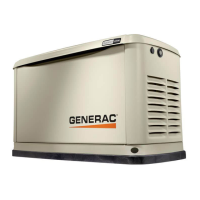


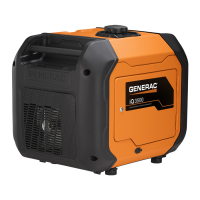
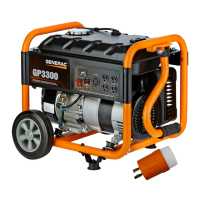

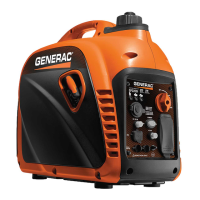

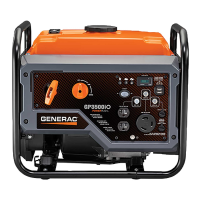
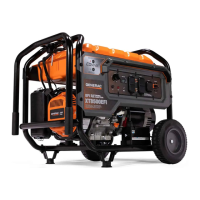
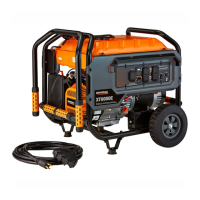

